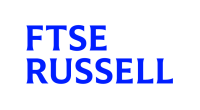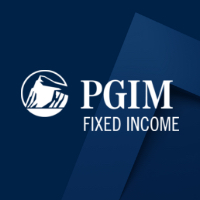Stock and Equity Market Valuation Techniques: Mar 2022
Equity Market Valuations: Updating the Science
Recent commodity price moves, if sustained, are likely to add further to margin pressure for many corporates, with only a select few having the ability to pass higher prices on to end-consumers. A more hawkish outlook from the U.S. Federal Reserve suggests that U.S. interest rates may peak at higher levels than anticipated, potentially causing a greater likelihood of the ‘r’-word being used more often in polite company. Quite what this means for individual stocks or equity market valuations more widely remains to be seen, but it could be a bumpy ride!
This selection of papers includes the third in a series by Oliver Wyman, which explores the science behind valuation methodology and updates it for the 21st century by re-engineering the Capital Asset Pricing Model (CAPM). Other papers look at various valuation and accounting measures, with Aswath Damodaran’s paper suggesting that measuring corporate profitability should be a straightforward task, but rarely ends up being so.

Overhauling the Science of Valuations (Oliver Wyman, 2022)
This paper, the third in a series by Oliver Wyman, reconsiders the science behind valuation, and updates it to make it more relevant for the 21st century by re-engineering the Capital Asset Pricing Model (CAPM), which it extends to bond markets. The paper also reveals unknown facts about the U.S. economy and financial markets, which aid investors’ comprehension of market moves.
Noise in Estimates of Internally Developed Intangibles (Dimensional, Jan 2022)
Dimensional Fund Advisors looks at the accounting methodologies associated with intangible assets and how these are reflected in corporate documentation and filings. They suggest that investors may be better off disregarding valuations associated with internally developed intangible assets as they appear to add little to cashflow analysis or metrics that can be usefully exploited.
Cochrane Address on Time-Varying Risk Premia (Enterprising Investors, Mar 2022)
The Enterprising Investor blog revisits a 2011 speech by American economist John Howland Cochrane to the American Finance Association. His address sought to explain future long term returns in equities based on current yields. He suggested a predictable pattern across markets and asset classes in which a valuation ratio or yield is transformed into excess returns across all asset classes.
Finding Resilience, and Opportunity, in Small Cap Stocks (Lord Abbett, Mar 2022)
For compliance reasons, this paper is only accessible in the UK & Europe
In this paper from Lord Abbett, they contend that a key to investment success from investing in U.S. small cap equities is identifying companies with durability or innovation at their core.
Focused on Fundamentals in an Unsettled Market (T. Rowe Price, Feb 2022)
For compliance reasons, this paper is only accessible in certain geographies
T. Rowe Price notes the elevated valuations of some equity sectors and suggests these could be vulnerable to setbacks as market volatility may increase given changes in macro policy related to inflation and monetary policy. However, they remain optimistic about the long-term prospects of cloud, e-commerce, and online advertising companies.
Podcast: The Question Is… Are U.S. stocks in a bubble? (Lazard AM, Feb 2022)
In this podcast, Managing Director Steve Wreford outlines that high valuations and investor willingness to ignore traditional profit measures remind him of the TMT, or Dotcom, bubble of the late 1990s. He thinks we are in for a more volatile period in markets and suggest ways he thinks investors should prepare.
Corporate Profitability and the Bottom Line (Aswath Damodaran, 2022)
Aswath Damodaran, Professor of Finance at the Stern School of Business at NYU, contends that measuring corporate profitability should be simple, but for a variety of reasons it isn't. In a post-Covid-19 recovery world, he dissects corporate results across a range of sectors using different methodologies, and notes that over half of global companies earn less than their funding costs.
U.S. Equity Market Valuations: Top dollar for top dollar (Hussman Funds, 2022)
John Hussman offers his usual insightful market commentary, suggesting that with equity markets valuations close to highs, the interest rate cycle turning and the tap of easy money to be turned off shortly, equity investors are not currently getting very many great bargains. He also postulates that speculative bubbles do pop, and that for extended periods, investors would have earned better returns from Treasury bills than from the S&P 500.





